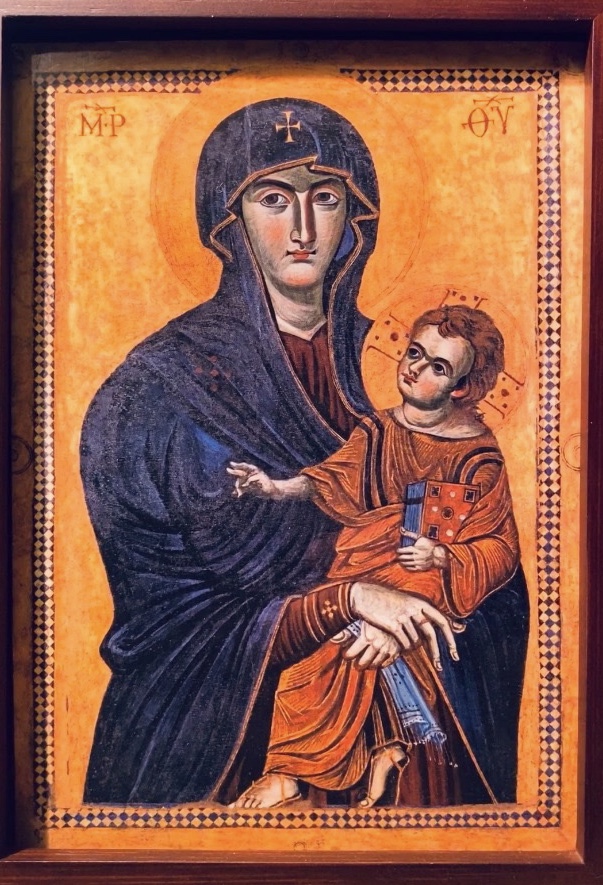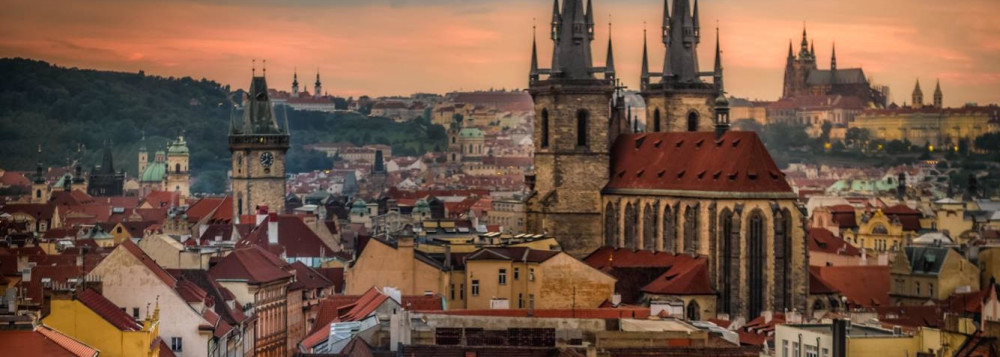
Pope Gregory the Great welcomed the image now known as Salus Populi Romani (“Salvation/Health of the Roman People”) in AD 593 and placed it in the basilica known as St. Mary Major. He had the icon carried throughout Rome and prayed for an end to the Black Plague. Pope Gregory XVI also venerated the image in 1837 to pray for the end of a cholera epidemic.
The Mother of God is shown with a ceremonial embroidered handkercheif in her right hand, an indication that she is the Queen of Heaven (another popular title for the image). For several centuries, both she and Christ also wore metal crowns which were attached to the icon but which have been removed and are now kept in the sacristy of St. Peter’s Basilica in the Vatican. The stars on the cloak of the Mother of God also indicate that she was a vrigin before-during-after the birth of her Son (the stars said to be the last glimmers of heavenly light that filled the cave in Bethlehem when Christ was born, seen in the folds of her cloak by the midwives when they finally arrived–too late).
The image of Salus Populi Romani is related to the church in Venice, Our Lady of Good Health, which was built in thanksgiving for the end of a plague there. You can read more about the church in Venice here.
